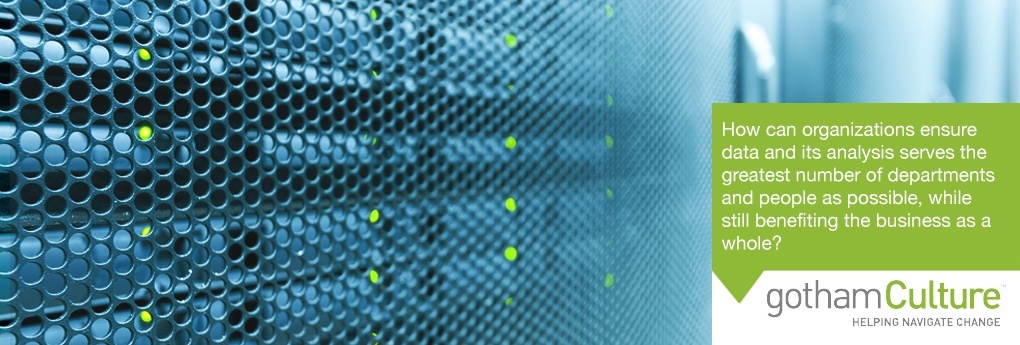With the rapid adoption of technology into today’s organizational culture, data collection and analysis is becoming a common component of the way we do business. However, this new reliance on data brings a new host of challenges, including how to combine and share this information across the organization in order to get as much value out of it as possible.
Every department has unique data needs, and while it’s important to analyze the data for individual departments, managers and leadership need to aggregate departmental data to gauge the overall health of the organization.
There can be huge differences in how departments structure and format their data. So, while combining multiple data sources has significant advantages, the disjointed nature of departmental data formats has led some organizations to rely on a less than ideal “top down” or “one size fits all” approach to analysis. In some cases this approach can work, but it often forces the organization to follow an architecture that reduces the data’s usefulness within each department.
Attempting to simplify the process by generalization may support the manager’s agenda, but the end results are not nearly as specific or as meaningful as they could be.
So, how can organizations ensure data and its analysis serves the greatest number of departments and people as possible, while still benefiting the business as a whole? Below are several ideas to consider:
Determine which questions need to be answered.
First and foremost, data has to help us answer questions. It is essential to clearly articulate which questions are more critical to managers and business units, and to ensure that data can be captured to support those.
Establish similar terminologies.
Despite the likelihood that each department has its own unique culture and terminology, organizations should strive to use a similar language across the board. This will help promote cross-communication and maintain a certain degree of data integrity for managers. Where this is not possible, organizations should develop a “translation table,” (i.e. a “Rosetta Stone” for the business) which can serve as the key to understanding the different terminologies.
Agree to a common set of core variables.
Each department has its own set of questions that will require a unique set of data, but managers need to address questions that span departments. To ensure they can, organizations should agree on a core set of variables that each department will collect. This can be something as simple as time, location, identification number, costs, and labor hours, etc. The key is to agree on how these variables will be defined and documented. Yes – that could require a bit of time and finesse. While this may be the most taxing part of the process, it is the most critical in the data decentralization process.
In an ideal world, individual departments and leadership would easily find a compromise for their various data needs. On the one hand, each business silo need data that is specifically relevant to their operations. On the other hand, managers need data sets that address broader questions and issues. If the overriding concern is real usefulness in the data, the time it takes to create systems that allow for both will be well worth effort.
How is your organization decentralizing data to inform your culture?

